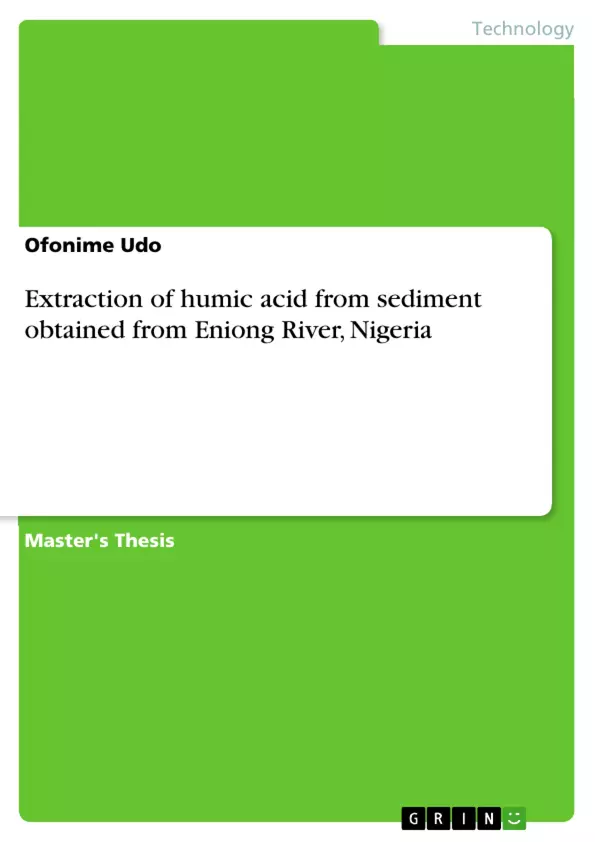The green chemistry method was used to extract humic acid from sediments obtained from Eniong River, Nigeria). The percentage yield of 0.2, 0.41 and 0.63 were obtained for 0.1, 0.5 and 1.0M NaOH respectively. The prepared humic acid (HA) was characterized using Ultraviolet-visible spectroscopy, Fourier transformed infrared spectroscopy (FTIR) and as well an investigating its surface properties. The spectrum confirmed the presence of surface functional group including -OH, -CO, -COOH. The UV spectrum was featureless typical of humic acids. The surface properties investigation showed that the extracted humic acid (EHA) was a mesoporous adsorbent with pore size between 2-50nm.
Inhaltsverzeichnis (Table of Contents)
- 1 INTRODUCTION
- Background of Study
- 2 EXPERIMENTAL
- 2.1 Description of Study Area
Zielsetzung und Themenschwerpunkte (Objectives and Key Themes)
This research aims to extract humic acid from sediments collected from Eniong River, Nigeria, using a green chemistry approach. The extracted humic acid is then characterized using UV-Vis and FTIR spectroscopy, and its surface properties are investigated.
- Extraction of humic acid from river sediments
- Characterization of humic acid using spectroscopic techniques
- Investigation of the surface properties of the extracted humic acid
- Potential applications of humic acid as an adsorbent
- The role of humic substances in the environment
Zusammenfassung der Kapitel (Chapter Summaries)
The introduction provides a historical overview of humic substances, their importance in soil and water environments, and the different mechanisms proposed for their formation. It discusses the different types of humic substances, including humic acid, fulvic acid, and humin, and highlights their chemical properties and structural characteristics.
The experimental section describes the study area, Eniong River, and outlines the methodology for extracting humic acid from the collected sediments. It details the characterization techniques employed, including UV-Vis and FTIR spectroscopy, and the investigation of the surface properties of the extracted humic acid.
Schlüsselwörter (Keywords)
Humic acid, extraction, sediments, Eniong River, green chemistry, UV-Vis spectroscopy, FTIR spectroscopy, surface properties, adsorbent, environmental chemistry.
- Quote paper
- Ofonime Udo (Author), 2015, Extraction of humic acid from sediment obtained from Eniong River, Nigeria, Munich, GRIN Verlag, https://www.grin.com/document/296182



